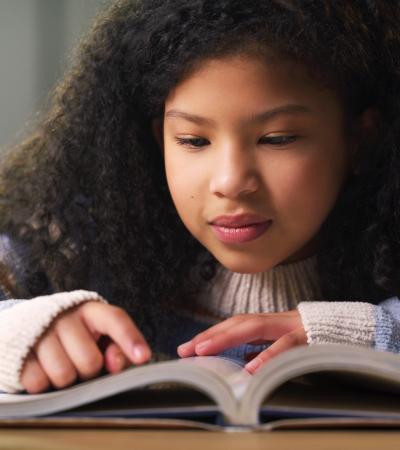This readers' advisory program, held in a local café with drinks and appetizers, functioned on a wine tasting model. Attendees were given RA profiles for books, heard a brief introduction to RA, and spent the evening sampling and discussing a series of titles from four genre/style categories.
Advanced Planning
Planning began two months ahead of time and included securing a partner location (ours was Village Café), selecting titles, building the “tasting menu” with their profiles and promoting the event. We had several goals for this program:
- Historic downtown Bryan is currently in the middle of a revival. We wabted to partner with a downtown restaurant to highlight the changes on Main Street, especially to an audience that usually uses our branch across town.
- To further establish the library as a place for programs and community gatherings. Because of the solid success of our five library book clubs, book discussion seemed like a natural place to start expanding this awareness.
- To offer our older patrons a thought-provoking, low-cost event where they could meet new people.
Marketing
We used Canva to design a kit of marketing images and designs, and we wrote short standard descriptions that could be used in a variety of platforms. We cannot recommend this enough; it made ongoing promotion and collaboration with other groups so much easier.
The city of Bryan has a communications and marketing department that helped us get the word out in the community via city social media (sharing library posts), the NextDoor app and the local newspaper events section and calendar.
We also shared regular reminders on library social media and hung fliers in the library and the café where we held the event. The café was listed as a co-host in our Facebook event, which significantly extended the reach of our advertising.
Budgeting
The bulk of our budget was spent on appetizers for the event, which we purchased from the café. No drinks were provided other than complimentary water, but attendees were able to purchase coffee, juice or wine from the café. This kept our budget down and meant we did not have to navigate alcohol service policies and liability with the city.
The only other cost for us was printing the signs and tasting menus. which we printed and stapled in-house to save money. If you didn’t want to print individual menus, you could probably provide the book profile on each book cover (which would allow you to only print it once) and provide paper for note-taking.
Day-of-event Activity
The two librarians leading the event took a cart with the books and menus over to the café about an hour before the event started to get all the tables set up and to catch any early-bird arrivals.
We had four genres in our tasting, with four books in each. We set up a table for each genre with the books propped up in the center on display stands. We were in the back of the café with a clear entrance to the event space, so we also set up a welcome table and the appetizer table there.
We capped attendance at 16 people. As they arrived, we checked their names on a list and gave them a nametag and tasting menu. We encouraged them to mingle, grab an appetizer or drink, and look around the space before choosing a seat at any table with books. This pre-event social time definitely helped to set the mood and supported a friendly atmosphere.
After everyone was seated, one of the librarians did a brief introduction to literary genres, then explained the process. Each table would get 5 to 10 minutes to read the genre summary in their menu, then sample and discuss the books at their table. The librarians circulated, answering questions and encouraging conversation at the tables.
After each table had finished their genre, we shifted the books around the tables. Although we had originally planned to have attendees move from table to table, the tight space would have made this difficult, so we had them stack the books on a corner of the table and the librarians helped pass the stacks to the new tables. As books were circling, attendees chatted, went to get refreshments and asked questions.
We had planned for a wrap-up discussion, but this interim discussion made that unnecessary, so we just highlighed upcoming programs and thanked everyone for attending. Most of our attendees left quickly, many with plans to have dinner at a downtown restaurant, though a few stayed to chat.
Program Execution
We had planned to ask attendees to fill out a feedback form after the event, but these were forgotten when we left the library, so all feedback was from speaking with attendees. Word-of-mouth response, both that night and from other patrons visiting the library later, was extremely positive, so we felt we had accomplished our goals of program awareness. We've already recieved requests to run this program again.
We have also secured a firmer partnership with the Village Café and hope to offer more programs there in future. Because downtown businesses are a close-knit community, we are also hopeful that this connection will help us meet and reach other business owners as the downtown revitalization continues.
Advice
We found this to be a flexible program and see opportunity to expand it to new locations moving forward. Although the café supported this style of program, we think it could also be fun to do a different style of tasting in the library's event space, as a pop-up at the Downtown First Friday Street Festival (a booth of three or four books with profiles), or even incorporated into passive programming as a display.
One negative report we heard consistently was that the space was a little dim and the acoustics from stone walls and floors made it difficult to hear discussions when all four tables were sampling. We were assured that it didn't ruin the event, but it certainly would have benefited from brighter lights and a space with carpet or softer walls.







